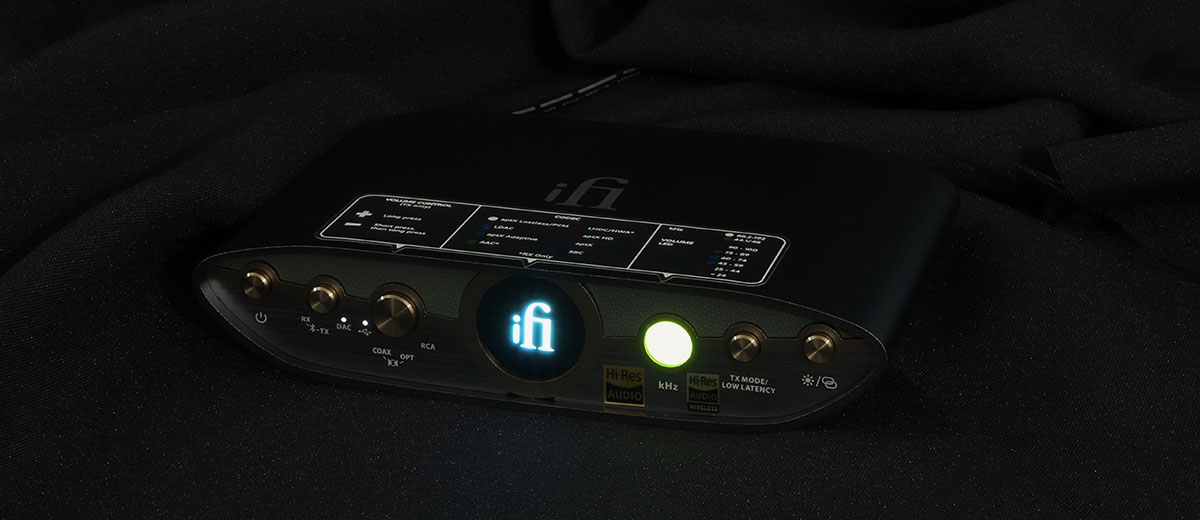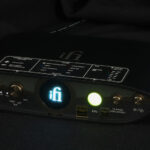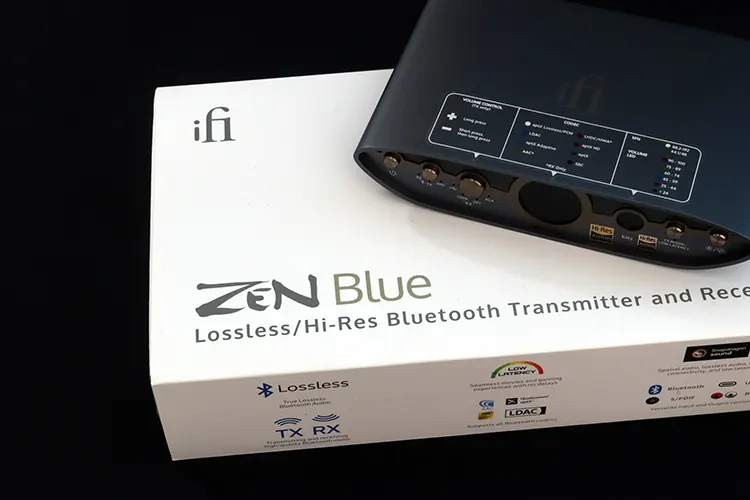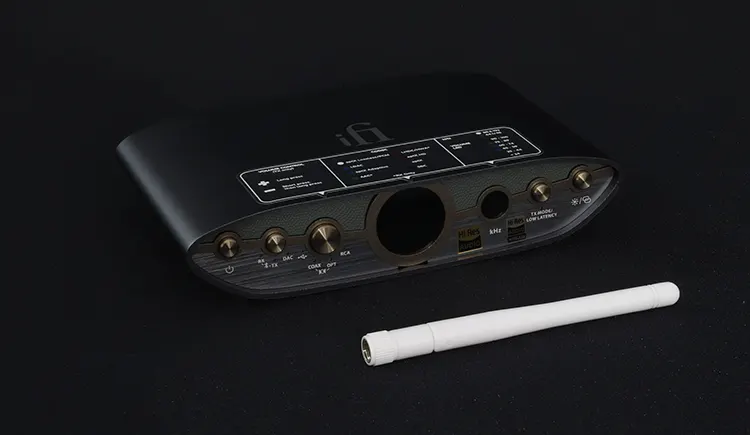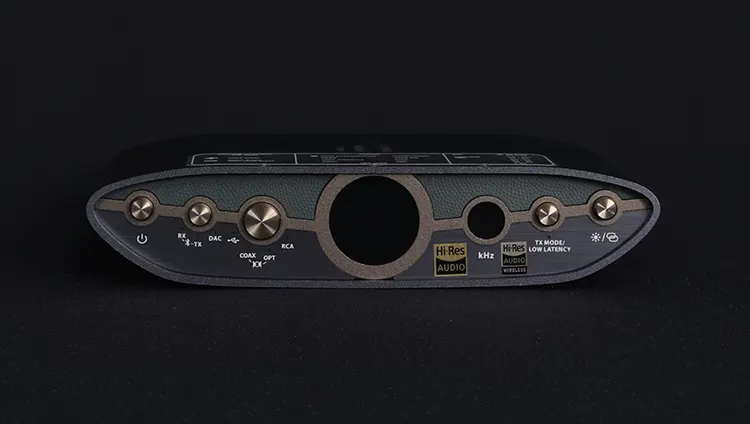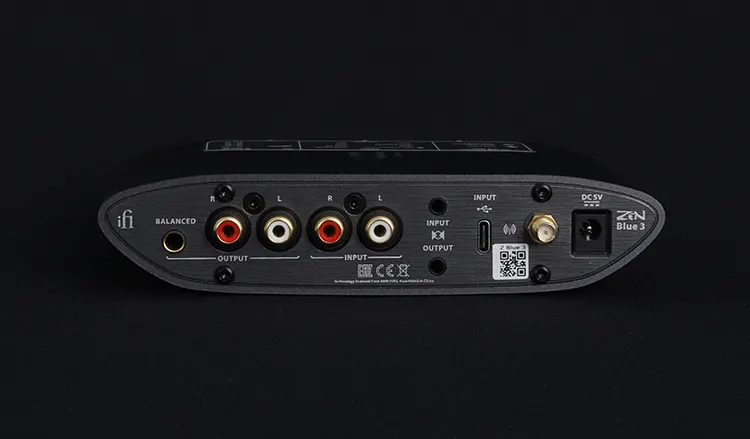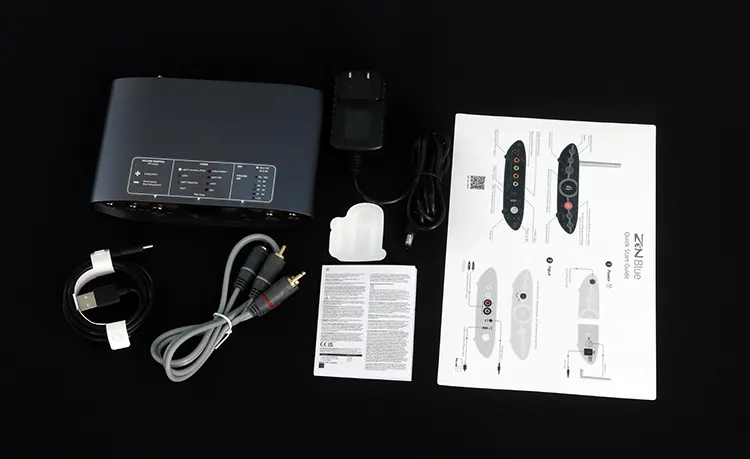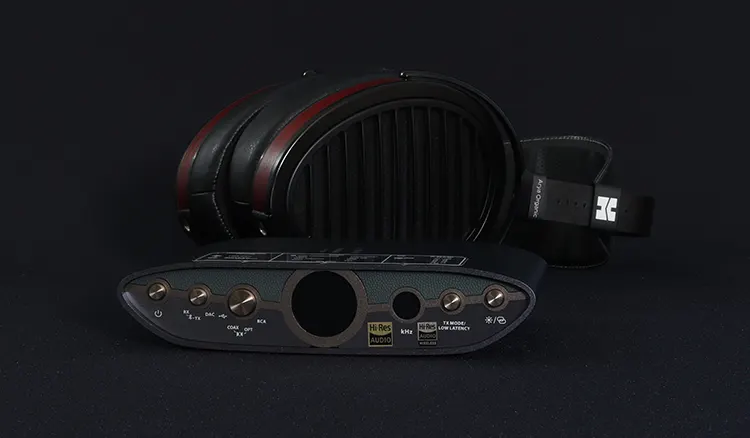In this feature, Louis reviews the iFi audio ZEN Blue 3, an affordable 3rd-generation desktop Bluetooth 5.4 aptX Lossless-capable streamer. It is priced at $299.00.
Disclaimer: I received this sample in exchange for my honest opinion. Headfonics is an independent website with no affiliate links or services. I thank iFi Audio for their support.
More information about iFi Audio products we have previously reviewed on Headfonics can be found here.
This post adheres to our current scoring guidelines, which you can find here
Some say that good things come in threes. Is it a coincidence that this review is our third review of the ZEN series 3 component line from iFi audio? The three series components from iFi audio presently carry four models, the ZEN DAC 3, the ZEN CAN 3, the ZEN Phono 3, and today’s subject.
We recently covered two of the four models. Each one exceeded our expectations and performed better than their predecessor and each model offered something the previous models lacked.
Today we will cover the ZEN Blue 3 which in my opinion is more in line with the ZEN ONE signature and not similar to any of the ZEN Blue line models. Because this model does more than just receive Bluetooth.
It sports many of the features found on the ZEN ONE Signature, particularly the IO section and front panel options.
It borrows lots of tech from the ZEN Blue 1 and 2 models but iFi audio also upgraded a couple of aspects in this model comparatively and added some extra features to bring this model to an up-to-date status.
Features
The most prominent new feature available on the iFi audio ZEN Blue 3 is the Qualcomm aptX Lossless capability. It’s a good codec, however, the available amount of mobile devices capable of this codec is limited and that list is growing slowly.
This capability comes from an integrated BT5.4 Qualcomm flagship QCC5181 chip which is their latest 1200kbps max bitrate capability chip. This model’s Bluetooth capability works bi-directionally since the iFi audio ZEN Blue 3 can transmit as well as receive BT signals.
Another added feature is the volume control. This volume control works on TX mode and is accessible by a long press on the input button to raise the volume, and a short press followed by a long press to lower the volume.
The ZEN Blue 3’s general appeal lies in that it would make an excellent central audio hub since it has a generous amount of IO ports and ways to tap into the unit versus previous ZEN Blue models. But its highest appeal lies within the Bluetooth features and transmission quality.
DAC
Here is where it gets interesting because iFi audio threw us a curve ball here on the IO section. Instead of including a switchable mode SPDIF and optical ports, they gave us separate 3.5mm IO ports and also included a USB-C input port.
They did use the same ESS tech ES9023 chip with an integrated Time Domain Jitter eliminator from the ZEN Blue 2 instead of their preferable Burr-Brown custom DAC.
This chip is a Hyperstream model but it’s at the bottom of the line within the ESS line of DAC chips, nonetheless.
Again, this model seems oriented to cater to those looking for optimal Bluetooth performance. On that front this unit delivers.
The accessible DAC is just an extra addition to the ZEN Blue lineup feature set since none of the previous models had this feature.
Decoding
The 2-channel 24-bit ESS internal DAC can handle 192kHz digital files off the coaxial tap and up to 96kHz on the USB-C tap. This DAC section doesn’t handle MQA files but the format has become less relevant so probably not a deal breaker in 2024.
There’s also mention within iFi’s website that the ZEN Blue 3 is also compatible with many modern-day game consoles like Sony’s PlayStation 5, and Nintendo Switch but I couldn’t confirm that since I’m a PC gamer and don’t own any of those consoles.
Bluetooth
The iFi audio ZEN Blue 3 can handle any Bluetooth codec that’s in circulation. There are around eight in total including aptX Lossless, aptX adaptive, aptX, LDAC, LHDC/HWA, AAC, and SBC. The “eighth” codec is aptX low latency which can be selected on the front panel.
The iFi audio ZEN Blue 3 has a dual Bluetooth mode and can operate as a receiver or transmitter by selecting the RX or TX mode and that’s good news. All of the above codecs work in either receiving or transmitting mode and from any input.
One of the hidden features the ZEN Blue 3 has is a volume control feature that works on the TX mode operable via the input button. No other ZEN Blue model has had a volume control implemented if I recall well and you can add this one to the new features list.
The Bluetooth section is firmware updatable, but it has to be done OTA via the Gaia app on Android and iOS, These updates cannot be done via USB.
Design
The iFi audio ZEN Blue 3 also received the series 3 two-tone facelift just like the other series 3 components we reviewed here along with an all-metal construction.
Construction-wise, this device is just like the entire line of ZEN components. I bet I can stop my car from rolling downhill with one of these wedged in front of a tire and it more than likely will not suffer damage. Heck, I bet it will still work just fine.
All the other blue-colored iFi components were more universal as far as matching aesthetically with other components but this new look has a more sophisticated look and it’s time to move on.
I/O
Here is another product feature twist. The ZEN Blue 3’s back panel looks busier and feature-rich compared to the other ZEN Blue models. This little guy has analog, digital, and OTA ways to tap into it.
This model omitted the separate optical port and the SPDIF port with the switch that flipped between digital and analog outputs. This time iFi threw in two 3.5mm taps that are each designated as specific input or output ports.
This way, you can IO simultaneously. These 3.5mm jacks can do SPDIF, (optical, or coaxial) and the only con here is that you have to convert the 3.5mm port to SPDIF or optical and iFi doesn’t throw one in the box.
One set of RCA plugs is for signal input, another for analog output, and one more which is 4.4mm balanced. All the outputs are fixed except for the TX mode.
The RCA outputs can supply 2V single-ended but the balanced side beefs it up to a 4.1V RMS output rating via the 4.4mm output. This extra voltage comes from the listed MAX97220 line drive chip. A Comtrue CT5302 handles the digital-to-analog transition.
All this adds up to a piece of gear that will make an excellent center hub in any existing home system.
Controls
Here’s an area where the iFi audio ZEN Blue 3 is more like the ZEN One Signature than any other previous ZEN Blue model. This front panel is busy compared to all the other ZEN Blue components.
Starting from left to right, there’s a power button. Next to the power button, is a DAC, RX, and TX mode selector. Then there’s a four-source input selector. On the right side, there’s a TX low latency mode switch, and then an LED brightness selector that doubles up as a Bluetooth pairing button.
This reinforces my belief that this unit should have been named after the ZEN ONE line instead of the Blue line because the ZEN Blue 3 has an accessible DAC section and an input selector. It even shares a similar front-mounted power button. None of the previous Blue models had these features.
Now let’s talk about the light in the center. This is what I would call an iFi light show that can display up to eight different colors, depending on what Bluetooth codec is running or what digital music format is being used. But knowing iFi components, there will be variations between firmware offerings.
Packaging & Accessories
The iFi audio ZEN Blue 3 comes with only a few accessories. It comes with a 4-foot-long USB type A to USB-C cable, a 2-foot long iFi branded RCA cable, a power brick, an SMA type antenna, a quick guide, and a warranty pamphlet. You also get an iFi sticker.
The packaging is the usual iFi white box with the unit nestled inside a pulp cradle, and all the accessories inside a small, separate white box. The smiley face prevails.
Sound Impressions
I used a Motorola RAZR 40 foldable, one of the mobile devices capable of handling aptX Lossless in order to test the RX portion. I used Creative Labs Aurvana Ace TWS to test the TX portion of the Bluetooth radio.
The DAC section was fed by a custom-built Windows system, Foobar, and high-bitrate FLAC files. The analog outs were used to feed an SMSL SH-X, a ZEN CAN 3 with iFi’s XLR to 4.4mm connection cable. The stock power brick was also used.
I used the Sennheiser HD 490 PRO Plus, a set of HIFIMAN Arya Organics, and the HE1000 UNVEILED, all on balanced connectivity. IEMs used were the HIFIMAN Svanar, the FiiO FA19, and the FH19.
DAC section
There’s a small veer from the typical warm iFi sound signature here. This one is mid-centric, and neutral, with a bright top end and a clinically clean bass response which can produce deep tones if a recording has them present.
Vocals are the most prominent aspect of the overall sonic presentation here, although there’s a lot of balance within the audible frequency bands. One does get a good sense of frequency extension in both directions and the overall tonality sounds full and rather natural.
I was skeptical at first since this DAC chip is not a top-tier ESS chip. If there was a top-tier chip in here, like the 9069, this model would have been a gem of a device. Because then all you have to worry about is amplification.
The DAC section although an adequate-sounding DAC tends to conglomerate and doesn’t offer the same spatial information from the DAC that all the other iFi gear produces, including the hip-dac 3, the ZEN DAC 3, and so on.
Bluetooth section
Presently, iFi audio makes some of the finest-sounding pieces of Bluetooth gear around, and the modern-day Bluetooth-implemented hardware within the ZEN Blue 3 paid off by being a stable platform that performs audibly well enough to put doubt in me in hardwired audio.
On LDAC, there’s not much difference from when you’re on aptX Lossless and from the internal DAC section. Perhaps you gain 5% in high-frequency extension and clarity over LDAC on aptX Lossless.
This Bluetooth solution produces audio that retains most of the dynamic range and frequency response. It delivers a full-range sound close to wired in overall tonality and balance.
It’s apparent that iFi attempted to capture their analog-like sonic signature and closely resembled it on those ZEN Blue 3 output taps and they succeeded.
Staging & Dynamics
This model seems to do best within a home audio system with full-sized speakers over a desktop setup and a highly revealing, and sensitive set of headphones.
I would say so because the ZEN Blue 3 produces a lot of depth but the height aspect remains just above the eye vision of the horizontal plane which assimilates a front-mounted speaker pair. It’s also a staging that is not very well-focused.
If you compare the dynamics between most iFi audio components and the ZEN Blue 3, you will notice a drop of about 10 decibels. However, I must remind you that this is over a Bluetooth transmission.
Click on page 2 below for my recommended pairings and selected comparisons.

